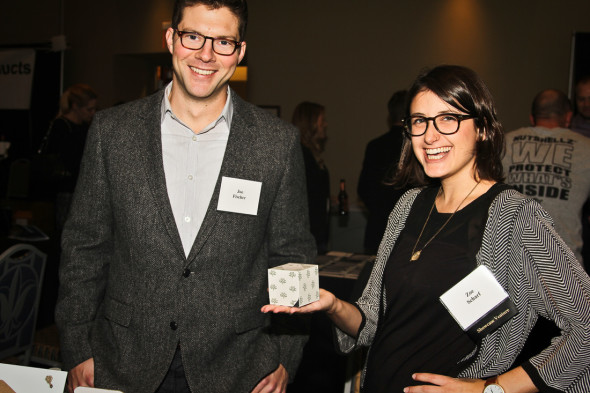In the past month, we have been working closely with a local startup in St. Louis called Greetabl. Greetabl produces and distributes small, beautifully designed boxes that combine the concepts of a gift and a gift-card. To date, the Greetabl team has primarily targeted consumers, and so we were tasked with designing a business-to-business (B2B) sales strategy that will help them target corporate consumers and ultimately establish recurring revenue streams. Our team consists of two Washington University undergraduates, Jude Gingo and Alan Zhang, as well as two MBA students, Shai Hatsor and Steve Hiltebeitel, and we are all very excited to be working with Greetabl and helping them advance to their next stage of growth.
We started our analysis with four goals in mind: 1) Identifying Greetabl’s primary value proposition, 2) Categorizing Greetabl’s target corporate customer segments, 3) Determining who the decision makers were for each of these segments, and 4) Analyzing the economics behind those segments. Our initial hypothesis was that Greetabl had a sustainable “WOW Factor” that would differentiate it from its competitors (traditional small gifts and cards) and that this “WOW Factor” would ultimately sell itself in a semi-viral fashion, once a good use-case was found for a corporate client.

greetabl founders Joe Fischer and Zoë Scharf at Startup Connection ’14.
In order to test our hypothesis, we interviewed with several former and existing clients of Greetabl, inquiring how they heard of Greetabl, as well as how and why they have used this product. We had two main takeaways from these interviews: that this product could be 1) surprisingly effective marketing material, and 2) effective at acquiring and retaining first-time customers. Although this second finding was well in-line with our initial hypothesis, we believe that the first takeaway holds far more potential in achieving Greetabl’s goal of establishing predictable B2B revenue streams. Thus, we have recently shifted our focus away from the “WOW Factor” of the product and towards its effectiveness at getting across a company’s message to its customers. This is a far more sustainable value proposition that we believe will justify its premium price.
Moving forward, we will be interviewing potential clients and gauging their interest in Greetabl’s product, asking questions regarding price sensitivity, potential use-cases, and design. Based on the feedback we receive, we will move on to laying out a specific implementation plan for Greetabl to acquire and retain these business customers.
Overall, it has been a great experience consulting for a local start-up in St. Louis. As a team, we were able to connect with the startup scene in St. Louis through our visit to T-REx in September, which kicked off the class. Furthermore, the speakers who provided an overview of the entrepreneurial landscape in St. Louis were helpful in piecing together what has become a vibrant and exciting driver of development and economic opportunity for the city.



